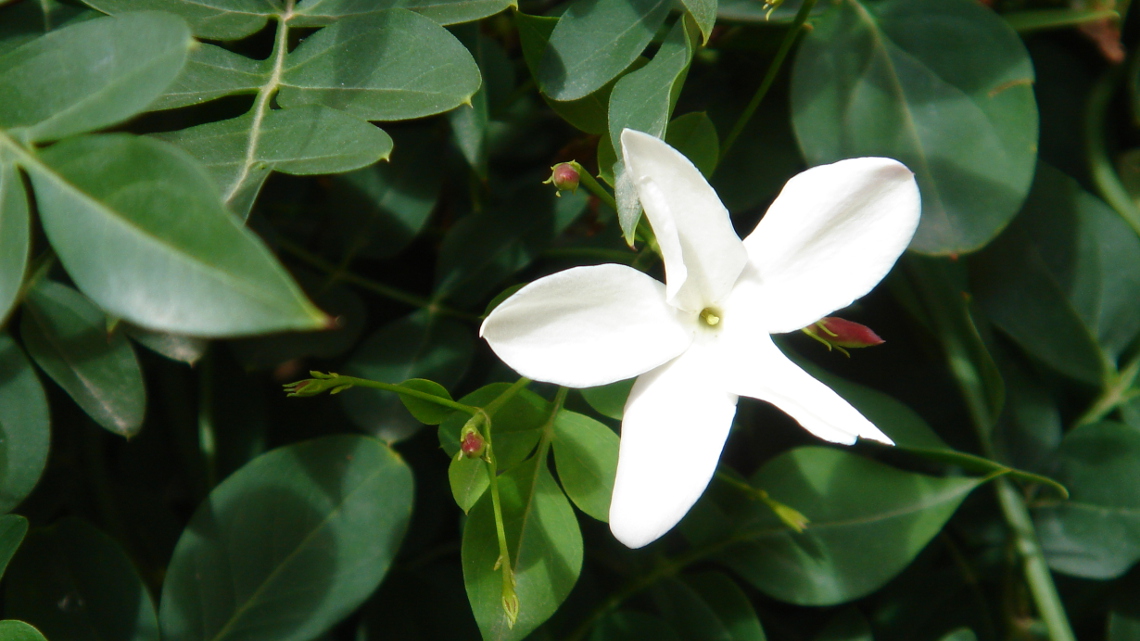Old hormone, new function
Jasmonic acid is widely known as a defence hormone of plants. Researchers from Würzburg have now identified another function: it also causes the closure of stomata.

Jasmine plants are known and loved for their bright white flowers and their fresh scent. This fragrance is based on the phytohormone jasmonic acid. The plant hormone bears its name because it was first discovered in the jasmine plant, but is also produced by other plants when they are eaten by insects or injured mechanically. The acid then causes a defensive reaction to protect the plant. Some species even transmit this acid signal via the air, in order to warn neighbouring plants. Researchers from Würzburg have now discovered another function of the important plant hormone: jasmonic acid is also part of the regulation of the leaf pores.
Even Arabidopsis uses the jasmonic acid signaling pathway
Leaf pores, also known as respiratory pores or stomata, are the "floodgates" and control unit for the absorption of carbon dioxide, which is essential for photosynthesis. These stomata are generally located on the plant leaves and are formed by two guard cells. The plant hormone abscisic acid (ABA) is a key signal that leads to the closure of the stomata. It is important that the stomata are closed, especially during dry periods, otherwise the plants lose too much water.
As plant biologists at the Julius Maximilian University of Würzburg (JMU) now report in the journal "Developmental Cell", mechanical damage to the leaves causes the leaf pores to close quickly - interestingly, not only for the wounded leaf, but also the neighbouring leaves. "This observation was not reported before and suggested to us that the jasmonate signaling pathway might have been turned-on in the guard cells," explains Dirk Becker, head of the study. Using a sensor with which the jasmonic acid signalling pathway can be tracked in living cells, the Würzburg researchers and French plant biologists were able to observe this effect for the model plant Arabidopsis.
Two hormones, one function: close the stomata
In order to decipher the underlying molecular mechanism, the plant physiologists subsequently investigated Arabidopsis mutants that do not react to jasmonic acid. The result: The potassium channel GORK is key for the closure of the stomata. In cooperation with researchers from Münster and Munich, it was also possible to identify a calcium-dependent protein kinase that regulates the activity of the GORK potassium channel. Moreover, the research team identified an inhibitor of the jasmonic acid signal in closing cells. This protein phosphatase ABI2 counteracts kinase-mediated channel activation.
"Interestingly, ABI2 is the co-receptor for the plant drought hormone ABA. This is indicating molecular crosstalk between the two phytohormones jasmonic acid and abscisic acid," explains Becker. However, it is not yet known how jasmonic acid influences the signalling pathway of abscisic acid. That is why the JMU team is now investigating whether jasmonic acid triggers abscisic acid biosynthesis or whether it intervenes on a different level.
jmr


